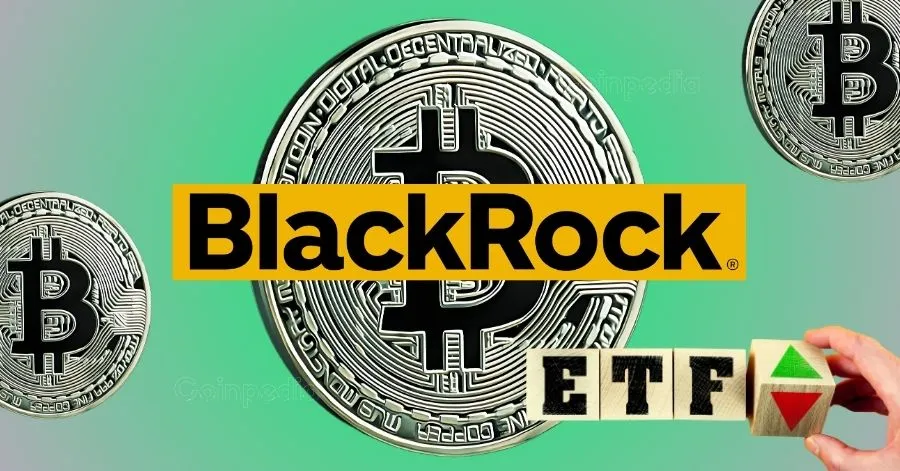BlackRock’s Bitcoin ETF (IBIT) has rapidly transformed the landscape of exchange-traded funds, setting unprecedented records and reshaping institutional and retail investor engagement with cryptocurrencies. This analysis explores the factors behind IBIT’s meteoric rise, its impact on the broader ETF market, and implications for Bitcoin’s role in modern investing.
The Record-Breaking Growth Trajectory of IBIT
BlackRock’s iShares Bitcoin Trust, known as IBIT, has achieved milestones at a pace unmatched by any other ETF historically. Notably, it reached $70 billion in assets under management (AUM) faster than any previous ETF, surpassing benchmarks set by gold ETFs like SPDR Gold Shares by a factor of five. In just months, IBIT accumulated tens of billions in inflows, a feat that underscores both the appetite for digital asset exposure and BlackRock’s formidable market presence.
Several facets highlight IBIT’s explosive growth:
– Speed and Scale: Surpassing $50 billion in just 228 days, IBIT became the fastest ETF of any kind to accumulate such vast assets. This trajectory is a testament to both Bitcoin’s roaring price rally—surpassing $100,000—and the ETF’s appeal as a regulated, accessible investment vehicle.
– Trading Volume: The ETF consistently posts high daily trading volumes, at one point reaching $4.2 billion in a single day. Such liquidity indicates strong investor engagement and institutional confidence.
– Market Share: IBIT holds over 600,000 Bitcoin, representing more than 3.25% of the total Bitcoin supply, signaling BlackRock’s influence over a significant portion of the market’s digital assets.
Institutional Embrace and ETF Market Disruption
IBIT’s rise reflects a broader institutional shift acknowledging Bitcoin as a legitimate asset class. Traditionally, Bitcoin’s volatility and regulatory uncertainties deterred mainstream investors. BlackRock’s entry—with its reputation and infrastructure—helped assuage some concerns by offering a regulated product that tracks spot Bitcoin prices without the complexities of direct custody.
Key impacts on the ETF and investment ecosystem include:
– ETF Inflows Surpassing Gold: IBIT’s inflows have exceeded those of the deeply established SPDR Gold Shares ETF (GLD) in recent periods, signifying Bitcoin’s growing perception as “digital gold.” This shift suggests a diversification trend where investors look beyond conventional safe havens toward crypto.
– Changing Fee Dynamics: IBIT reportedly out-earned BlackRock’s flagship S&P 500 fund in trading fees, highlighting not only investor demand but also the revenue significance of this product within BlackRock’s lineup.
– Trading and Market Volatility: As trading volumes and inflows surge, IBIT appears to contribute to reduced volatility in Bitcoin markets by providing a more stable institutional route for exposure. This development could mark the beginning of a maturation phase for crypto investments.
Factors Fueling IBIT’s Popularity
Multiple dimensions explain why BlackRock’s Bitcoin ETF struck such a chord:
– Brand Trust and Accessibility: BlackRock’s global credibility as one of the world’s biggest asset managers reassures investors wary of the cryptocurrency space. The ETF structure allows investors to gain Bitcoin exposure without self-custody risks or navigating crypto exchanges.
– Bitcoin Price Momentum: IBIT’s launch and rise coincided with Bitcoin breaching previous records, surging above $90,000, and even nearing $112,000 in some instances, amplifying investor interest and media attention.
– Institutional Capital Flow: The ETF attracted massive inflows from institutional investors, likely motivated by diversified mandates and regulatory clarity around spot Bitcoin ETFs compared to unregulated crypto funds.
Challenges and Market Reactions
Despite the notable inflows, IBIT also experienced fluctuations, including record single-day outflows, illustrating that the ETF and Bitcoin itself remain sensitive to broader market sentiment and cryptocurrency cycles. Volatility in BTC prices still affects investor behavior, and competition intensifies as other firms launch similar products aiming to capture a share of the growing Bitcoin ETF demand.
Additionally, concerns about concentration risk arise as BlackRock accumulates a sizeable fraction of the total Bitcoin supply, potentially increasing its influence on market dynamics and pricing.
The Future Outlook: IBIT and the Evolution of Digital Asset Investing
BlackRock’s IBIT ETF sets a precedent for how Bitcoin and other cryptocurrencies might integrate into traditional financial portfolios. Predictions by notable industry figures project that IBIT will continue leading ETF inflows, potentially becoming the largest ETF globally within a decade. This scenario rests on the continued institutionalization of crypto assets, further regulatory approvals, and persistent investor enthusiasm.
The rapid adoption and scale of IBIT suggest several future trends:
– Mainstream Adoption: Investor demand for regulated crypto exposure will likely keep growing, leading other asset managers to develop analogous products.
– Market Maturation: Increased liquidity and institutional involvement may dampen extreme volatility over time, making Bitcoin an increasingly stable portfolio component.
– Expanded Asset Classes: Success with Bitcoin ETFs could pave the way for regulated funds tracking other cryptocurrencies, fostering broader digital asset diversification.
Conclusion: A New Chapter in ETF and Crypto Integration
BlackRock’s Bitcoin ETF has rewritten the rules by rapidly amassing assets and commanding a significant slice of the Bitcoin market, highlighting an accelerated acceptance of crypto as an investable asset class. IBIT’s blend of scale, liquidity, and institutional credibility propels it beyond a mere investment product into a transformative force within financial markets. As it continues to shatter records, it signals a sophisticated era where Bitcoin ETFs might define the convergence of traditional finance and digital innovation, altering how investors manage risk, gain exposure, and perceive value in the modern economy.

